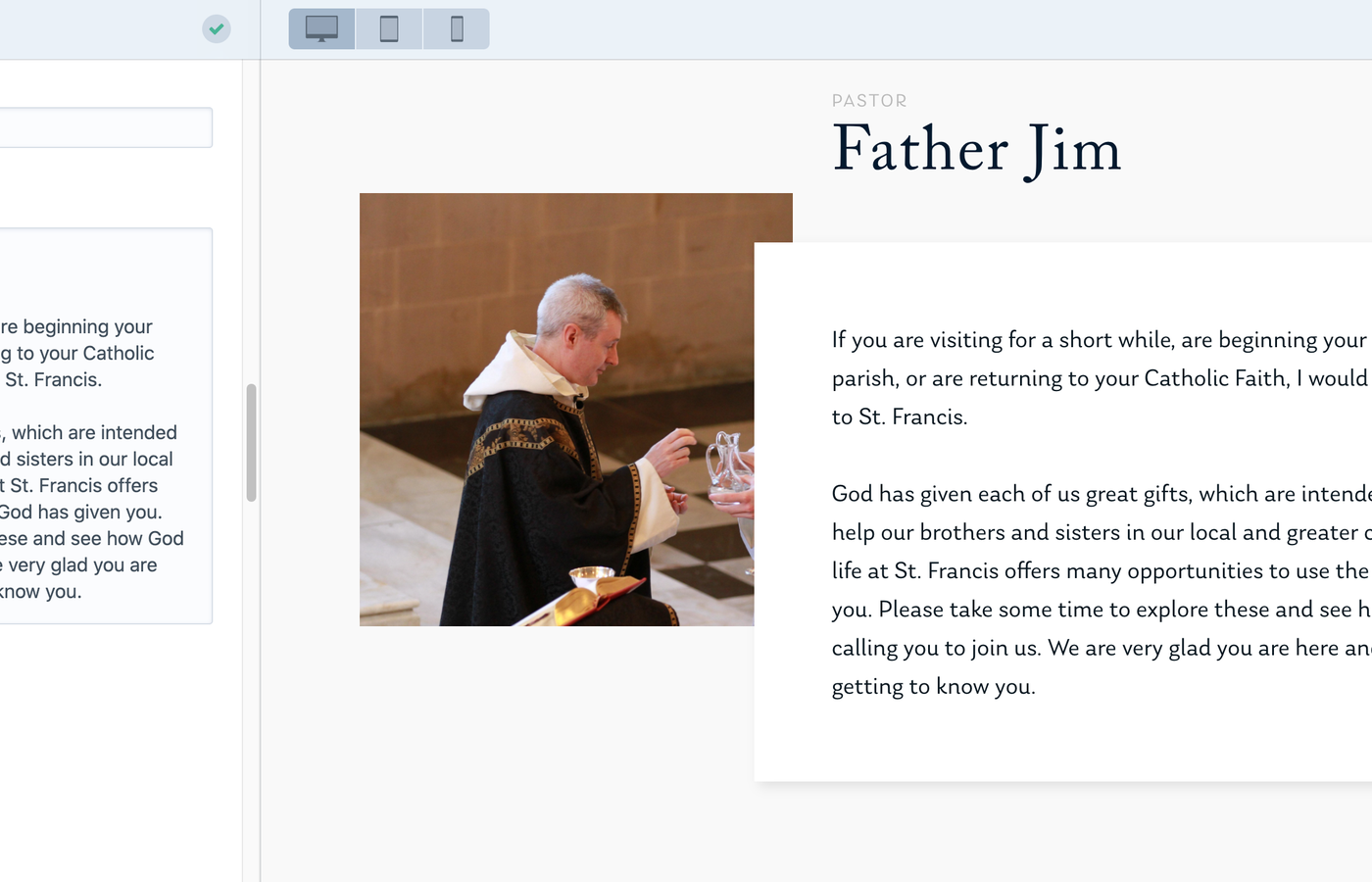Almost every Catholic parish on the planet has a website. Parish websites abound. But how many parishes could tell you succinctly – if asked –what the point of it is? Why does it exist?
– Well, you need a website!
But why?
– To tell people where the church is? To tell people how to contact us?
It's right there on Google, Facebook, and so on.
– So people can see when mass times are!
Fine. But that could be a paragraph on the diocesan website, or on a mass finder website, or a quick line on a Facebook page. What's not widely known is truly why the parish website as a distinct entity exists. To find out why this is, first we have to go back in time.
In the early days of the internet, there weren't many parish websites, and those that there were were hosted at .edu addresses by earnest, weird, patchily-bearded men. This was where a theme gradually began to form: the desire to cram as much information as possible onto the parish site, regardless of any real impetus other than "because we can". Imagine the Jurassic Park theme music playing as parish websites began to fill with guest books, and lists of links, and in-depth recaps of canon litigation regarding the Sacraments, and ponderous walls of text on every subject remotely conceivable, parish-adjacent or not.

It was regrettable (though predictable) that things took this turn, because it's possible the platonic ideal of a parish website existed in 1997.
After this, came the explosive years where everyone had to have a website. Content Management Systems were introduced, which meant that even those without a degree in Computer Science could add content. Parish sites careened ever faster towards their inevitable destination: bulletin boards in the sky. As generations of volunteers and transient staff cycled through, nothing was ever deleted from the parish website, but each new crop of initiatives stacked the teetering shopping cart of information higher.
In the late 2000s the web started to look a lot fancier, and parishes realized their digital text monoliths looked stale. So they rebuilt them in Drupal, or Wordpress, or something similar. They added some pictures. And then they moved all of the old data over. Just in case.

Fast forward to now and we have more and better ways of building websites. Anyone can do it!
We're at the pinnacle of complexity in parish websites. It's easier than ever to pump out information onto the web, even make it look pretty good. But sitting amongst our piles of content, we have no overall strategic vision – we can't see the wood for the trees.
What's the point?
If the point of a parish website is to have a publicly accessible historical record of every facet of parish life, we're doing great. If the point is to make a lot of people feel important by hosting the information on their ministry, or their bio, or that one talk they gave 9 years ago to the sewing circle, then nothing needs to change. If the point is just to share static information that could just as well be anywhere else on the web, then our work here is done.
But that's not the point.
If you had to boil down the essence of a useful parish website you could reduce it to one word: Action.
This is the metric you have to use to evaluate every single page – every word – on your website. What is the action this is leading to? Some obvious examples:
- Mass times lead to the action of attending a mass
- A ministry page with a signup form converts people from observers to participants
- A welcome message from the pastor leads prospective parishioners to set up a meeting
These action paths are fairly obvious, but there is a second level of influence that your website can bring to bear to encourage direct action. Realizing that everything on your website is part of your "brand" is essential. Your brand isn't your logo or colors – it's the story you tell about yourself. And just like the more practical action-oriented examples above, your brand and messaging can have an enormous bearing on whether your website visitors take the action you want them to.
- Representative, high quality photos of parish life push a church-shopper to give your Sunday experience a try over the four other local parishes proudly sporting pixellated, unflattering snapshots of a fish fry from 9 years ago.
- Concise, directed, strategic site structure and copy gives your parishioners the impression that the church staff are competent, trustworthy, and great stewards of the money they put in the plate every week, and they continue to donate and respond to campaigns.
- Annotated, regularly uploaded homilies help highlight the quality of your pastor's preaching, and can attract visits or support from anywhere in today's globally connected internet.
- News posts about events showcase how fun and fulfilling they are, and over time more parishioners decide to attend.
It's true that if you have to start somewhere, just sharing your Mass times is where you'd start – but for the long haul these second order effects are just as crucial to your goals.

Prioritizing this thought in your mind: What action am I trying to encourage here? immediately takes your website from reactive, to proactive – from maintenance, to mission. Not only will it help you create better pages, but when a piece of content comes across your desk that needs to go on the site, you immediately have a way to judge where it should go... or if you should push back on including it at all.
Make every pixel count. Attention spans are short, and competition is furious. If it doesn't make people do (or feel!) something, it shouldn't be on your website.

Straightforward parish websites
Does your parish need a website that's focused on action? Easy to use? Affordable and flexible? We can help.
Try SimpleParish free
